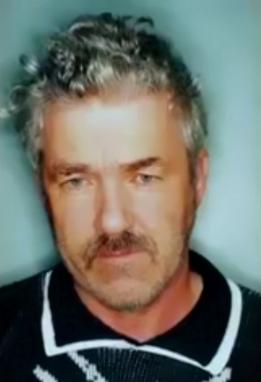Guy Paul Morin is a Canadian who was wrongly convicted of the October 1984 rape and murder of his nine-year-old next-door neighbour, Christine Jessop of Queensville, north of Toronto, Ontario. DNA testing led to a subsequent overturning of this verdict. On October 15, 2020, the Toronto Police Service announced a DNA match identifying Calvin Hoover as the one whose semen was recovered from Jessop’s underwear. Hoover killed himself in 2015.
False evidence, fabricated evidence, forged evidence, fake evidence or tainted evidence is information created or obtained illegally in order to sway the verdict in a court case. Falsified evidence could be created by either side in a case, or by someone sympathetic to either side. Misleading by suppressing evidence can also be considered a form of false evidence ; however, in some cases, suppressed evidence is excluded because it cannot be proved the accused was aware of the items found or of their location. The analysis of evidence may also be forged if the person doing the forensic work finds it easier to fabricate evidence and test results than to perform the actual work involved. Parallel construction is a form of false evidence in which the evidence is truthful but its origins are untruthfully described, at times in order to avoid evidence being excluded as inadmissible due to unlawful means of procurement such as an unlawful search.

Maxwell Thomas Berty Confait, also known locally as Michelle and "Handbag", was a 26-year-old Seychelles-born cross-dresser who was murdered in London, England, on either 21 or 22 April 1972. The investigation into Confait's death and the convictions of three youths based on confessions of dubious validity raised questions about police procedures in the United Kingdom and caused a major review in how police treat suspects, particularly minors and the "educationally subnormal".
Jane Longhurst was a British special-needs teacher and musician who was murdered by Graham Coutts on 14 March 2003. Longhurst's partly decomposed body was found burning in woodland in West Sussex on 19 April. Coutts, who was dating Longhurst's best friend, was a guitarist and part-time salesperson living in Brighton.

On 18 June 2001, Danielle Sarah Jones, 15-year-old English schoolgirl disappeared from East Tilbury, Essex, England. There was a large and exhaustive search to find Jones' body and it was considered one of the biggest cases Essex Police had to deal with at the time. Despite the police's best efforts, her body was never found.
Charles Randal Smith is a former Canadian pathologist known for performing flawed child autopsies that resulted in wrongful convictions.

It is possible to convict someone of murder without the purported victim's body in evidence. However, cases of this type have historically been hard to prove, often forcing the prosecution to rely on circumstantial evidence, and in England there was for centuries a mistaken view that in the absence of a body a killer could not be tried for murder. Developments in forensic science in recent decades have made it more likely that a murder conviction can be obtained even if a body has not been found.

Amanda Marie Knox is an American author, activist, and journalist. She spent almost four years incarcerated in Italy following her wrongful conviction for the 2007 murder of Meredith Kercher, a fellow exchange student with whom she shared an apartment in Perugia. In 2015, Knox was definitively acquitted by the Italian Supreme Court of Cassation.

Teresa Elena De Simone was murdered in Southampton, England, in 1979. Her murder led to one of the longest proven cases of a miscarriage of justice in English legal history. The murder occurred outside the Tom Tackle pub and was the subject of a three-year police investigation which resulted in the arrest of Sean Hodgson. Hodgson was convicted of the murder by a unanimous jury verdict in 1982 and was sentenced to life imprisonment. After serving 27 years in prison he was exonerated and released in March 2009. DNA analysis of semen samples that had been preserved from the original crime scene showed that they could not have come from him.
The Commission on Proceedings Involving Guy Paul Morin—known as the Kaufman Commission or the Morin Inquiry—was a 1996 royal commission appointed by the Government of Ontario to address the wrongful conviction in 1992 of Guy Paul Morin for the murder of Christine Jessop on 3 October 1984, for which he was exonerated by DNA evidence on 23 January 1995.

John William Cooper is a Welsh serial killer. On 26 May 2011, he was given a whole life order for the 1985 double murder of siblings Richard and Helen Thomas, and the 1989 double murder of Peter and Gwenda Dixon. The murders were known in the media as the "Pembrokeshire Murders" or the "Coastal Murders". Cooper was also sentenced for the rape of a 16-year-old girl and a sexual assault on a 15-year-old girl, both carried out while a group of five teenagers were held at gunpoint in March 1996, in a wooded area behind the Mount Estate in Cooper's hometown of Milford Haven, Pembrokeshire.

Lynette Deborah White was murdered on 14 February 1988 in Cardiff, Wales. South Wales Police issued a photofit image of a bloodstained, white male seen in the vicinity at the time of the murder but were unable to trace the man. In November 1988, the police charged five men with White's murder, although none of the scientific evidence discovered at the crime scene could be linked to them. In November 1990, following what was then the longest murder trial in British history, three of the men were found guilty and sentenced to life imprisonment.
This is a list of notable overturned convictions in Canada.
Helen McCourt was a 22-year-old British insurance clerk from Lancashire, England who disappeared on 9 February 1988 in the village of Billinge, Metropolitan Borough of St Helens, Merseyside, shortly after disembarking from a bus less than 500 yards from her home. Her body has never been found. Ian Simms, a local pub landlord, was convicted of her murder.

The murder of Jenjira Ployangunsri was a sensational crime that took place in Thailand in 1998. Jenjira, a 23-year-old medical student, was killed on 26 January, and her body subsequently dismembered, by her boyfriend Serm Sakhonrat, also a medical student. The case received intense media coverage as the investigation proceeded over the following weeks until Serm was arrested and parts of Jenjira's body were identified. It saw the beginning of the use of DNA forensics in criminal investigation in Thailand and brought public attention to the work of forensic pathologist Porntip Rojanasunan.

15-year-old Nicole van den Hurk disappeared on her way to work on 6 October 1995, in Eindhoven,. Her body was later found in the woods between the towns of Mierlo and Lierop on November 22, 1995.

On the morning of 10 August 1998, 11-year-old Nicky Verstappen disappeared from a summer camp he was attending in Brunssum, Limburg. His body was found on the evening of 11 August, 1.2 kilometres (0.75 mi) away in Landgraaf, and a murder investigation was subsequently launched. Despite extensive investigation, the case remained unsolved for over twenty years.

Jacqueline Susan Ansell-Lamb and Barbara Janet Mayo were two young women who were murdered in separate incidents in 1970. Both women were last seen hitch-hiking along motorways in England, and both were sexually assaulted before being strangled to death.
Colin Frederick Campbell is a British double murderer who in the early 1980s abducted two separate and unrelated women in west London and killed them in sexually motivated attacks. In 2013, 32 years after the event, Campbell was convicted of the high-profile unsolved murder of 17-year-old Claire Woolterton after a DNA match was found to him. He was already in prison for the 1984 killing of Deirdre Sainsbury, but had had his murder conviction in this case downgraded to manslaughter on the grounds of diminished responsibility in 1999 after he claimed that he had only killed her due to having an epileptic fit. In an open prison and about to be released in the early 2010s, Campbell was finally apprehended for Woolterton's murder, which had led to one of the UK's biggest manhunts at the time and a large amount of press coverage due to it being a murder of a child. The epilepsy experts who had helped Campbell win his appeal in the Sainsbury case accepted that epilepsy could not explain two violent and sexually motivated murders, and in sentencing the judge said that it had been wrong to downgrade his conviction to manslaughter in 1999. Detectives said that had he not been caught, Campbell would have potentially become a serial killer, a term usually used to describe a repeat killer who has killed at least three victims. Campbell is imprisoned at HM Prison Woodhill.











